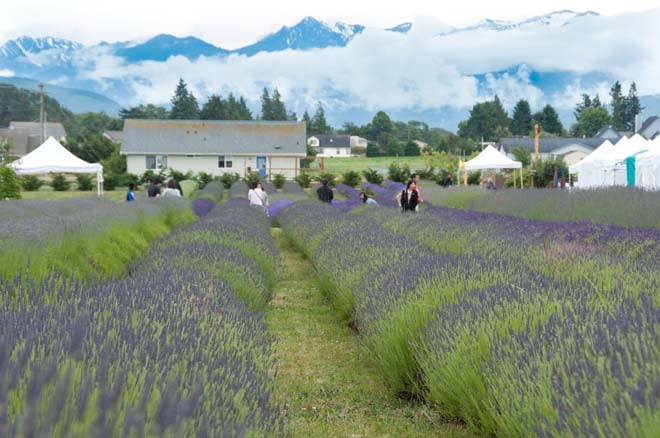

Lavandula (common name lavender) is a genus of 39 known species of flowering plants in the mint family, Lamiaceae[1]. It is native to the Old World and is found from Cape Verde and the Canary Islands, Europe across to northern and eastern Africa, the Mediterranean, southwest Asia to southeast India. Many members of the genus are cultivated extensively in temperate climates as ornamental plants for garden and landscape use, for use as culinary herbs, and also commercially for the extraction of essential oils. The most widely cultivated species, Lavandula angustifolia, is often referred to as lavender, and there is a colour named for the shade of the flowers of this species.
This article is about the genus of flowering plants known as lavender. For the most widely cultivated species in that genus, see Lavandula angustifolia. "Lavender" redirects here. For the color, see Lavender (color). For other uses, see Lavender (disambiguation).
From Wikipedia, the free encyclopedia
The genus includes annual or short-lived herbaceous perennial plants, and shrub-like perennials, subshrubs or small shrubs.[2] Leaf shape is diverse across the genus. They are simple in some commonly cultivated species; in others they are pinnately toothed, or pinnate, sometimes multiple pinnate and dissected. In most species the leaves are covered in fine hairs or indumentum, which normally contain the essential oils. Flowers are borne in whorls, held on spikes rising above the foliage, the spikes being branched in some species. Some species produce coloured bracts at the apices. The flowers may be blue, violet or lilac in the wild species, occasionally blackish purple or yellowish. The calyx is tubular. The corolla is also tubular, usually with five lobes (the upper lip often cleft, and the lower lip has two clefts).
Lavender is a pale tint of purple. It applies particularly to the color of the flower of the same name. The web color called lavender is displayed at the far left swatch. It matches the color of the very palest part of the lavender flower. However, the more saturated color shown in the next cell to the right is floral lavender. This more closely matches the average color of the lavender flower and is the tone of lavender historically and traditionally considered lavender by the average person as opposed to those who are web site designers.[3]
| web | floral | amethyst | uw brand |
|---|---|---|---|
| #e6e6fa | #b57edc | #9966cc | #4b2e83 |
| rgb(230, 230, 250) | rgb(181, 126, 220) | rgb(153, 102, 204) | rgb(51, 0, 111) |
| hsl(240, 8%, 98%) | hsl(275, 43%, 86%) | hsl(260, 65%, 51%) | hsl(268, 100%, 44%) |






|